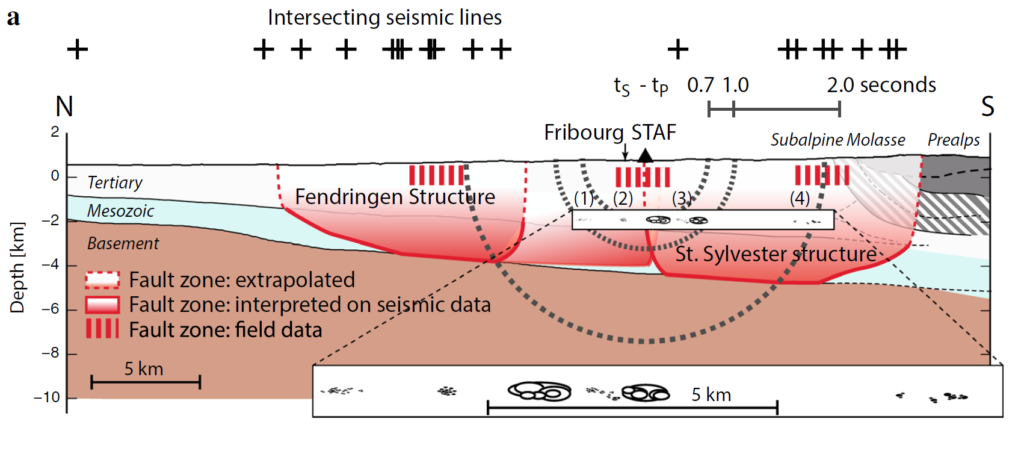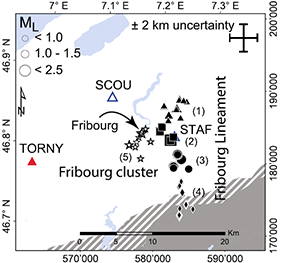Fribourg rocks ! The fault points to active tectonics in the Molasse Basin. In her just published, open source paper Naomi Vouillamoz shows that weak seismicity is present in the Fribourg area in clusters related to active faults at shallow depth. The Fribourg Lineament constitutes a non-negligible source of seismic hazard in the Swiss Alpine foreland. Multi-scale imaging of a slow active fault zone: contribution for improved seismic hazard assessment in the Swiss Alpine foreland. (2017). Naomi Vouillamoz, Jon Mosar & Nicholas Deichmann. Swiss Journal of Geosciences, doi 10.1007/s00015-017-0269-0.
Read More
Abstract Seismic hazard assessment of slow active fault zones is challenging as usually only a few decades of sparse instrumental seismic monitoring is available to characterize seismic activity. Tectonic features linked to the observed seismicity can be mapped by seismic imaging techniques and/or geomorphological and structural evidences. In this study, we investigate a seismic lineament located in the Swiss Alpine foreland, which was discussed in previous work as being related to crustal structures carrying in size the potential of a magnitude M 6 earthquake. New, low-magnitude (ML -2.0 to 2.5) earthquake data are used to image the spatial and temporal distribution of seismogenic features in the target area. Quantitative and qualitative analyses are applied to the waveform dataset to better constrain earthquakes distribution and source processes. Potential tectonic features responsible for the observed seismicity are modelled based on new reinterpretations of oil industry seismic profiles and recent field data in the study area. The earthquake and tectonic datasets are then integrated in a 3D model. Spatially, the seismicity correlates over 10–15 km with a N–S oriented sub-vertical fault zone imaged in seismic profiles in the Mesozoic cover units above a major decollement on top of the mechanically more rigid basement and seen in outcrops of Tertiary series east of the city of Fribourg. Observed earthquakes cluster at shallow depth (<4 km) in the sedimentary cover. Given the spatial extend of the observed seismicity, we infer the potential of a moderate size earthquake to be generated on the lineament. However, since the existence of along strike structures in the basement cannot be excluded, a maximum M 6 earthquake cannot be ruled out. Thus, the Fribourg Lineament constitutes a non-negligible source of seismic hazard in the Swiss Alpine foreland.

Schematic profile on the Fribourg Lineament (N 1680000–N 2020000 in CH1903-LV03 projection system) that integrates geological, seismic imaging and earthquake data at scale.
